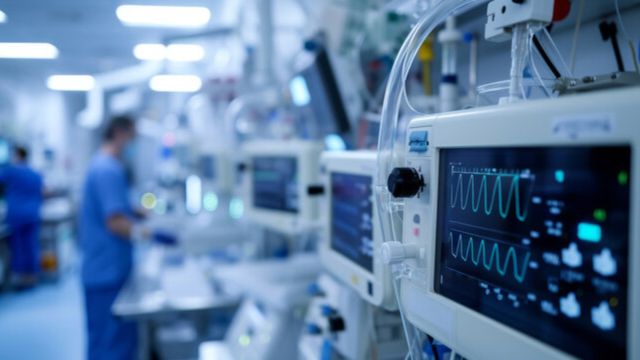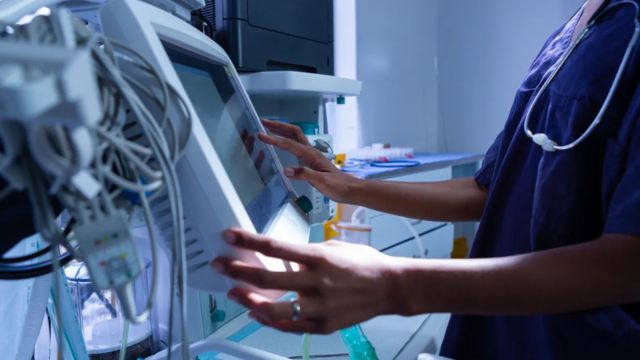Maintaining operational efficiency, safety, and compliance within healthcare facilities depends on control of device obsolescence and replacement cycles in clinical engineering. Clinical engineers must make sure that antiquated devices are replaced with newer, more efficient models without sacrificing patient care or safety as medical technology develops quickly. This procedure calls for careful preparation, a clear awareness of technology developments, and respect of healthcare laws.
Understanding Device Obsolescence
Medical device obsolescence is the result of technological developments, legislative changes, or manufacturer support lacking that renders a medical device or equipment outdated. Sometimes manufacturers might stop making replacement parts or newer models might have improved features meant to streamline healthcare procedures or increase patient outcomes.
Although obsolescence is inevitable in the lifetime of medical devices, it presents several difficulties for clinical engineers assigned to make sure devices remain compliant with industry standards and functional.
You may like this: Clinical Engineering and Artificial Intelligence: Transforming Diagnostic Equipment
Evaluating the Impact of Obsolescence

Clinical engineers have to assess the possible hazards a device might cause to the hospital when it becomes outdated. Devices whose parts are no longer available or those which stop receiving software updates, for instance, might create a security risk since vulnerabilities might not be corrected.
Medical devices also have to satisfy strict criteria established by agencies including ISO (International Organisation for Standardising) and the FDA (Food and Drug Administration). Should a device become outdated and not replaced or maintained, it might no longer satisfy these criteria and might result in expensive fines or safety violations.
Managing the Replacement Cycle
Several elements affect the replacement cycle of medical devices, including the kind of device, the budget of the healthcare institution, and developments in medical technology. Managing these replacement cycles is the responsibility of clinical engineers so that obsolete equipment is replaced on schedule without interfering with the operation of the healthcare institution.
These are some main techniques clinical engineers apply to control device replacement:
- Inventory Assessment: Clinical engineers often conduct regular audits to assess the condition of existing medical devices. By evaluating device performance, identifying frequent repairs, and understanding the cost-effectiveness of maintaining outdated devices, clinical engineers can prioritize which devices need replacement.
- Lifecycle Management: Effective lifecycle management involves tracking each device’s age, usage history, and manufacturer support status. Using specialized software, clinical engineers can develop predictive models that forecast when a device will likely need replacement based on its usage patterns, maintenance history, and technological advancements.
- Prioritizing Critical Devices: Not all devices within a healthcare facility carry the same importance. For example, critical devices like ventilators, infusion pumps, and monitoring equipment must be replaced more urgently if they become obsolete due to their direct impact on patient care. Clinical engineers prioritize the replacement of these devices to ensure patient safety is not compromised.
Managing Financial Constraints
Managing device replacement under financial limits is one of the main difficulties clinical engineers deal with. Medical equipment is costly, and healthcare facilities have to strike a balance between financial constraints and new technology demand. Often working with hospital managers, clinical engineers create a plan that fits budget constraints and priorities for patient care.
Some cost-effective strategies include:
- Phased Replacements: Instead of replacing an entire fleet of devices at once, clinical engineers may prioritize the replacement of the most critical devices while gradually replacing the less essential ones over time. This phased approach helps to spread out the financial burden of replacement.
- Refurbishment and Reconditioning: In some cases, clinical engineers may opt to refurbish or recondition medical devices to extend their lifespan. This can be a cost-effective option if the device is still performing well and parts are available.
- Leasing Programs: Some healthcare facilities explore leasing options for medical devices, which can reduce upfront costs while ensuring they have access to the latest technology. Clinical engineers can help assess the feasibility and benefits of these programs based on the facility’s needs.
Stay Updated with Technological Advancements
To effectively manage device obsolescence, clinical engineers must stay informed about the latest advancements in medical technology. By attending conferences, reading industry journals, and networking with other professionals, clinical engineers can gain insights into emerging technologies that could be beneficial for their healthcare facility.
Additionally, staying informed about regulatory changes and manufacturer support schedules helps clinical engineers make informed decisions about when to replace or upgrade devices. This proactive approach ensures that healthcare facilities are always equipped with the best tools to provide optimal patient care.
You may like this: Cybersecurity in Clinical Engineering: How Engineers Protect Medical Devices from Hacking
Collaboration with Healthcare Providers
Clinical engineers work closely with healthcare providers, including doctors, nurses, and other medical staff, to ensure that device replacements align with clinical needs. They gather feedback from users to understand how well current devices meet patient care demands and which features are most important for their workflows.
Regular communication with healthcare providers helps clinical engineers make informed decisions about which devices to prioritize for replacement, ensuring that the new technology supports the facility’s patient care goals.
At J&J Supplies, we understand the critical role that medical equipment plays in ensuring patient safety and quality care. Stay informed about the latest updates in clinical engineering and medical supplies by subscribing to our newsletter. Get timely insights, industry news, and more delivered straight to your inbox!
Frequently Asked Questions (FAQ)
What is device obsolescence in clinical engineering?
Device obsolescence occurs when medical devices no longer meet current technological standards or when manufacturers stop supporting them with replacement parts or software updates.
How do clinical engineers manage the replacement cycle of medical devices?
Clinical engineers manage the replacement cycle by evaluating the condition of devices, using lifecycle management tools, prioritizing critical devices, and working within financial constraints.
What are the most important factors to consider when replacing medical devices?
Key factors include device performance, safety, compliance with regulations, budget constraints, and the impact on patient care.
Can obsolete medical devices be refurbished or reconditioned?
Yes, in some cases, clinical engineers can refurbish or recondition medical devices to extend their lifespan, especially if parts are still available and the device is functioning well.
How can healthcare facilities minimize the financial impact of device replacement?
Facilities can minimize costs by implementing phased replacements, exploring leasing options, and considering refurbishment programs for non-critical device.








